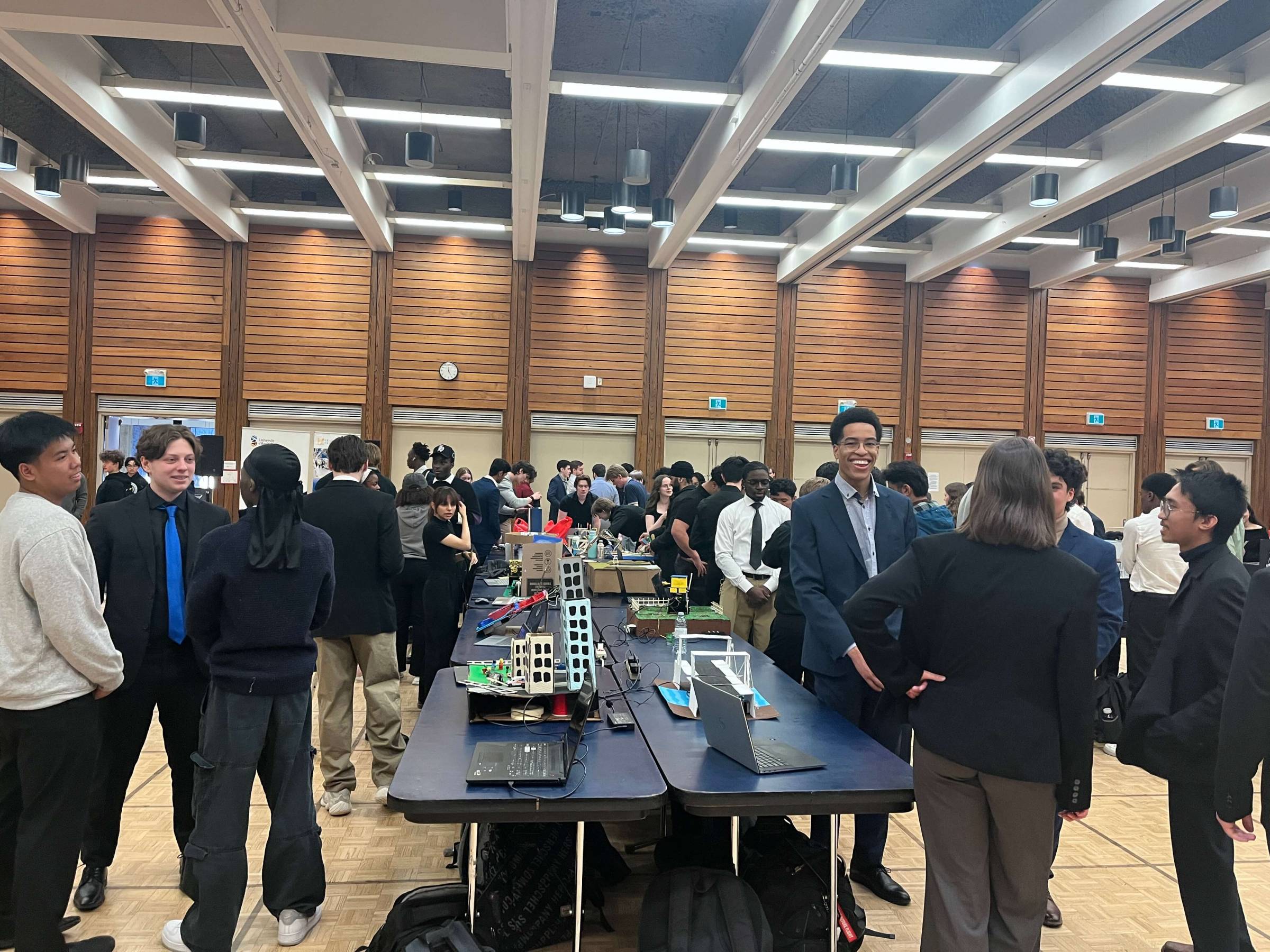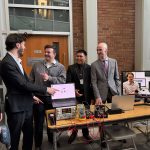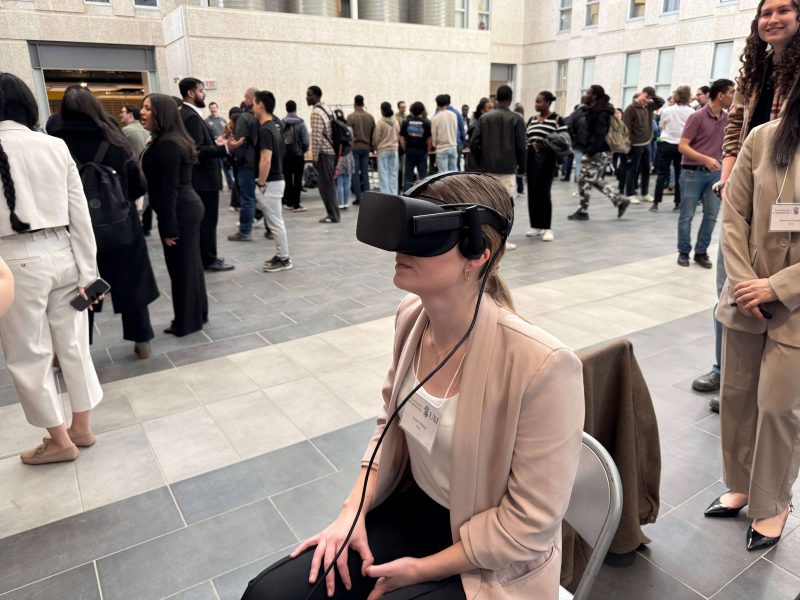
First-year design to final-year capstone
The level of experience may vary, but the ingenuity is clear from the very beginning.

Biosystems capstone
ENG 1430 – Introduction to Engineering Design, is a foundational first-year engineering course that features an innovative approach to teaching and learning. It brings new engineering students together to complete projects and provide a hands-on, collaborative experience in the engineering design process. Students explore the engineering profession through practical projects, teamwork and the application of the engineering design process.

Electronic and Computer Engineering capstone students
Dr. Natasha Jacobson, who instructs the course, has recently introduced a real-world approach to teaching the design process. Historically, the course involved various projects focused on different engineering skills and departments, such as creating rubber band cars or Rube Goldberg machines. Now, the course focuses on having student teams thoroughly develop projects from conceptualization to final prototyping, while also consulting with a client for certain requirements. These projects are then highlighted through a final showcase with guest judges from industry, the faculty, upper-year students and their peers. The winning team even walks away with a cash prize sponsored by Friends of Engineering, a group of passionate industry members who provide sponsorship and opportunities to students at the Price Faculty of Engineering. This event provides students with the opportunity to see what their peers have created and to network with industry professionals. Successful projects may also be implemented in real life; for example, a previous section of this course designed and built small-scale automatic watering systems for the Sustainability in Action Facility at the University of Manitoba.

Civil capstone students
ENG 1430 acts as ‘training wheels’ for the final year capstone course, which is required by every department. In the departments of Civil, Biosystems and Mechanical engineering, students partner with industry to solve a relevant problem. In the Department of Electrical and Computer Engineering, some students still partner with industry, though it isn’t required, and students have the freedom to pursue a different project that they are passionate about. At the end of the term the students showcase their projects with posters, prototypes and presentations to industry members, faculty and peers. Successful projects are also implemented in the real world, and there are several sponsored awards and prizes for the teams in each department.
The value of these real-world assignments is monumental. Students learn both hard and soft skills through these courses, from teamwork and communication to technical skills and project management. They also gain a deep understanding of professionalism and ethics, preparing them for the challenges and responsibilities of an engineering career. By engaging in open-ended design problems and applying principles of safety and sustainability, students learn to navigate the complexities of real-world engineering projects.

Electrical and Computer Engineering capstone student






